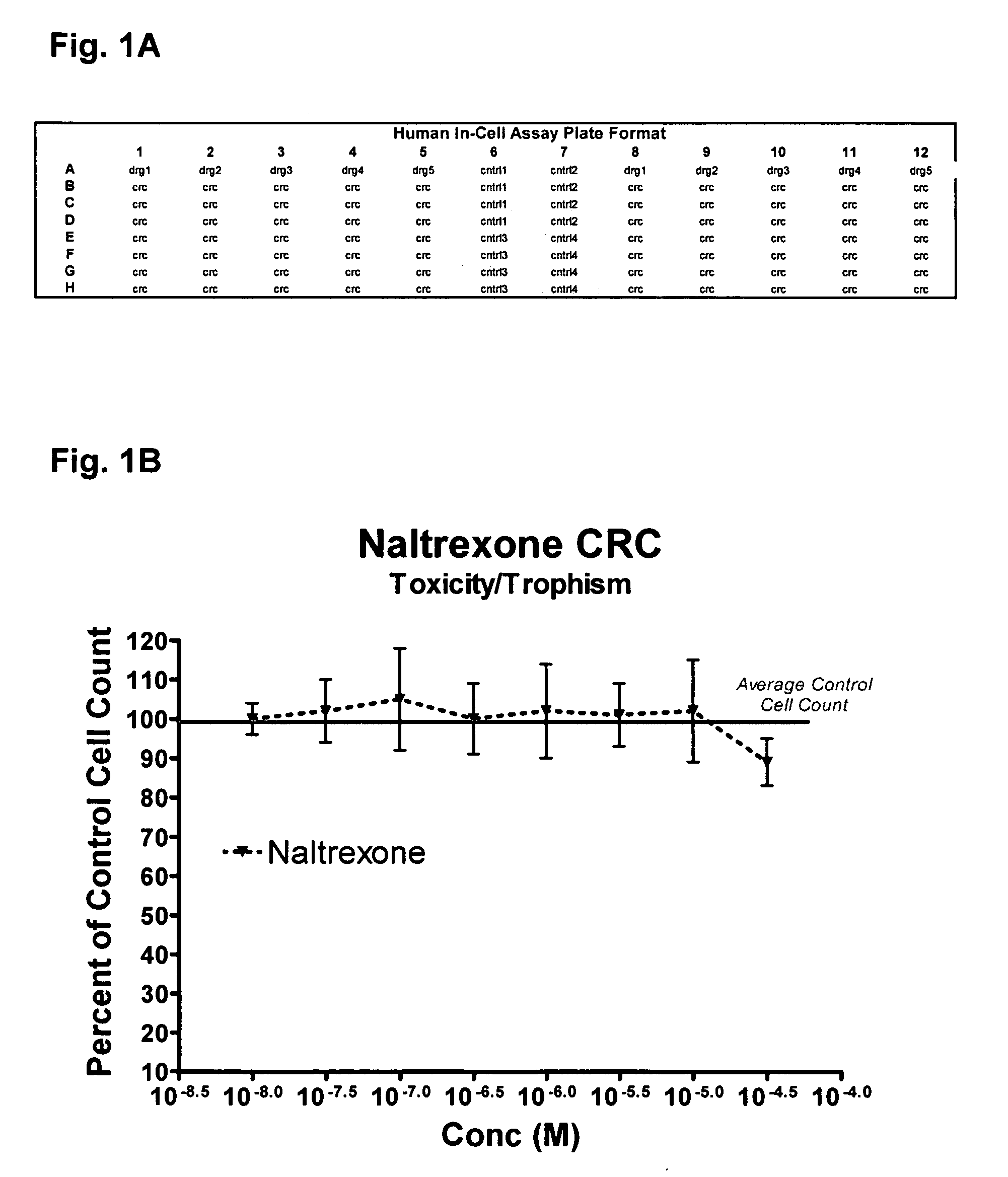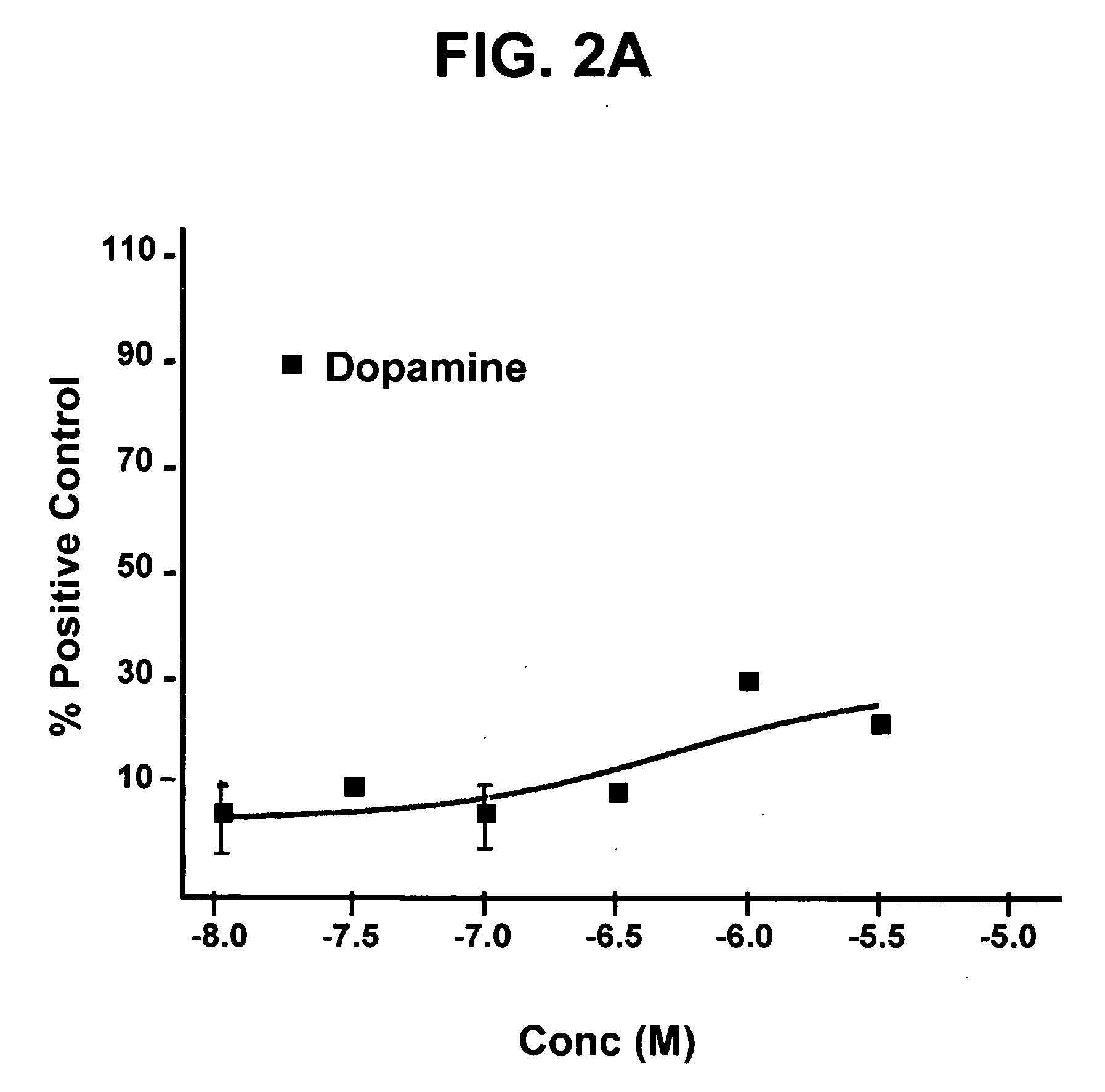Methods for identifying agents and conditions that modulate neurogenesis
a neurogenesis and agent technology, applied in the field of methods and tools for identifying agents and conditions that modulate neurogenesis, can solve the problems of reducing efficacy, undesirable side effects, and no satisfactory methods for curing, preventing or treating parkinson's disease or its symptoms, and achieve enhanced detection ability and throughput high
- Summary
- Abstract
- Description
- Claims
- Application Information
AI Technical Summary
Benefits of technology
Problems solved by technology
Method used
Image
Examples
example 1
Establishment of Neurosphere Culture from Primary Tissue
[0141] Tissues of interest are dissected from a subject (e.g., a human embryo) and placed in petri dishes containing ice-cold 0.6% glucose in PBS (Sigma P4417). Dissected pieces are placed into sterile eppendorf tubes and treated with a 0.1% trypsin solution (Worthington Biochem LS003707) for 10-20 minutes at 37° C. The trypsin is then removed followed by incubation with 0.1% trypsin inhibitor (Sigma T6522) for 10 minutes at 37° C. After removal of the trypsin inhibitor, the sample is incubated with DNAase (Sigma D4527) for 10 minutes at 37° C., followed by removal of the DNAase and incubation with passaging medium (30% Hams F12 (Gibco 11765-062), 70% DMEM (Gibco 11965-118), 1% PSA (Gibco-BRL 15420-062), 2% B27 (Gibco-BRL 17504-044), 20 ng / ml EGF and FGF-2+heparin (5 micrograms / ml), and optionally, 10 ng / ml LIF (Chemicon LIF1010). The tissue is then triturated with a large bore pipette tip (e.g., P1000) followed by a smaller b...
example 2
Automated, High-Throughput Method for Measuring Growth of Human NSCs Comprising Individual Neurospheres
[0143] Human neural stem cells (hNSC) are grown as neurospheres in maintenance media+LIF, as described in Example 1. Neurospheres in maintenance media are cultured for exactly three days after manual dissociation involving exactly two chops using a McIlwein Tissue Chopper set for a 200 um chopping separation with a 90° turn in between chops, followed by a third chop with a 45°. This results in a specific size range with approximately 24% of neurospheres having an area between 0.02 mm2 and 0.6 mm2, allowing plating into multi-well plates (384- or 1536-well).
[0144] For example, and on the third day of culture following manual dissociation, the neurospheres are gently agitated to produce a suspension with the neurospheres evenly distributed, and a sterile pipette is used to transfer a small volume (e.g., 10 μl) of solution to / from each well of a clear bottom 384-well plate (e.g., Co...
example 3
Transfer of Human Neurospheres to Monolayer Culture
[0147] Human neural stem cells (hNSC) are grown as neurospheres in maintenance media, as described in Example 1. The cells are routinely passaged every 7-14 days by mechanical chopping on a tissue chopper (McIllwain Instruments) to a sphere diameter of 200 μm, and are fed every 3 to 4 days by replacing half of the media with fresh media. The neurospheres are transferred to adherent monolayer cultures after dissociation by enzymatic treatment with ACCUTASE™ (a combination of enzymes, phosphate buffered saline, and phenol red from Innovative Cell Technologies, San Diego), or alternatively trypsin (Worthington Biochem LS003707).
[0148] Briefly, the neurospheres are transferred to an eppendorf tube, allowed to settle for one minute, and treated with ACCUTASE™ pre-warmed to 37° C. for 10 minutes. The neurospheres are dissociated by gentle trituration with a P200 tip approximately 20-30 times. After centrifugation for 2 minutes at 200 g,...
PUM
 Login to View More
Login to View More Abstract
Description
Claims
Application Information
 Login to View More
Login to View More - R&D
- Intellectual Property
- Life Sciences
- Materials
- Tech Scout
- Unparalleled Data Quality
- Higher Quality Content
- 60% Fewer Hallucinations
Browse by: Latest US Patents, China's latest patents, Technical Efficacy Thesaurus, Application Domain, Technology Topic, Popular Technical Reports.
© 2025 PatSnap. All rights reserved.Legal|Privacy policy|Modern Slavery Act Transparency Statement|Sitemap|About US| Contact US: help@patsnap.com



